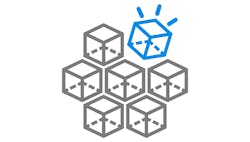Plant decision-makers have discovered over the past few years that leveraging adaptable, open-architecture systems in manufacturing can be crucial for the future of the business. As multiple sectors continue to deal with issues in logistics and consolidation among struggling vendors, proprietary systems have shown themselves to be significant risks for manufacturers when vendor consolidations, shutdowns or supply limitations are taken into account.
Having a modular and scalable system is essential for more than increasing efficiency; these systems reduce the risk that your lines will be hamstrung due to changes in the business environment that are outside of your control. Understanding and planning for single-source risk are critical steps to avoid unnecessary downtime.
Also read: Commercial technologies’ open architecture enable customization and flexibility
What is an open-architecture hardware platform?
Open-architecture platforms are the basis of building a plant ecosystem that is compatible with many vendors. Single-source risks increase a plant's vulnerability to the volatility of a single supply chain and can force businesses into costly upgrades to their plant's systems. By being compatible with components and software from many vendors and sources, coupled with extensive customizability, open-architecture platforms reduce single-sourcing risks and help plants to avoid forced upgrades due to changes in a vendor’s product offerings.
These modular, scalable systems are more than just widely compatible with various platforms, components and vendors. They allow manufacturers to implement the best components for their applications instead of limiting them to choices within one vendor’s selection. In addition, as production needs evolve, plants can add capabilities such as cloud data connectivity, onboard edge computing for data analysis at the machine level or remote access.
For plants to make the most risk-averse choices, evaluating widely compatible technologies that can interface with any HMI, PLC or any cloud storage system is good for business.
How do plants benefit?
Legacy solutions have used proprietary, closed-architecture systems for decades. Suppose a problem arises with a single component that requires replacement and the vendor no longer offers that part or has placed that component on allocation due to supply issues. In that case, the plant is going to suffer downtime costs.
If the part is no longer available, the plant may be forced to reinvent its process completely. Can they find another compatible solution? Will they be required to upgrade or change other associated machinery or software to adapt?
In a scenario where a large vendor acquires a smaller one and is shutting down support for that product line, the customers of the smaller vendor will face increasing difficulty getting spare parts and support. Will they be forced to replace vast amounts of critical equipment?
Plant downtime has substantial direct and indirect costs for a business, and each day lost to an unforeseen vendor issue shutting down production can be devastating to the bottom line.
While there is no universal answer to these questions situation-to-situation, plant decision-makers have a better chance at addressing these issues as they arise when they implement open-source systems that are widely compatible with other technologies. These platforms allow them to dynamically implement new systems for any reason, whether that reason is an unexpected change in the business environment or a planned upgrade that is being evaluated.
By having broad compatibility, plants get to choose the best solution instead of the only compatible option. That means more competition among vendors, driving increases in quality and reductions in cost.
How can plants avoid risk by using open-architecture systems?
Legacy systems that are only compatible with one vendor were once the standard, but this practice now has become a liability. There are numerous situations where a plant can experience risk if it is tied to a closed, proprietary system, creating a trend toward a standard of vendors offering open, customizable platforms.
Put together a working group or taskforce to evaluate possible single-source risks. The priority focus needs to be on critical parts that are frequently replaced and then expanding outward based on prioritizing the likelihood of replacement and how crucial it is for the plant to function. This evaluation can help plant managers have an in-place plan to deal with a potential issue.
Single-source risk needs to be a consideration for executive planning in today’s economy. Though choosing to implement technologies and platforms that offer broad compatibility is the first step, evaluating those solutions is critical. Plant decision-makers need to ask the key questions:
- Does the solution under consideration use universal technology standards?
- Does it allow robust, application-specific customizations through software instead of hardware upgrades?
- Will the hardware or software be compatible with other vendors out of the box?
Ensuring compatibility and customization are included in the critical evaluation criteria allows a plant manager to manage the risk associated with proprietary systems.
Manufacturers will have a broader ecosystem of choices once widely compatible, open-architecture systems are a standard instead of only a best practice. This abundance of choice will lower costs while increasing efficiency across the board.
As open-source platforms continue to be implemented, solutions will have to compete more among vendors. Competition for the best, most effective solutions will mean more choice and less risk for plant managers while promoting higher-quality products delivered at better prices.
Ramey Miller is the HMI/edge product marketing manager Siemens Industry for the United States. He has a bachelor's degree in computer and electrical engineering from Purdue University. Contact him at [email protected].
About the Author
Ramey Miller
Siemens

Leaders relevant to this article:

